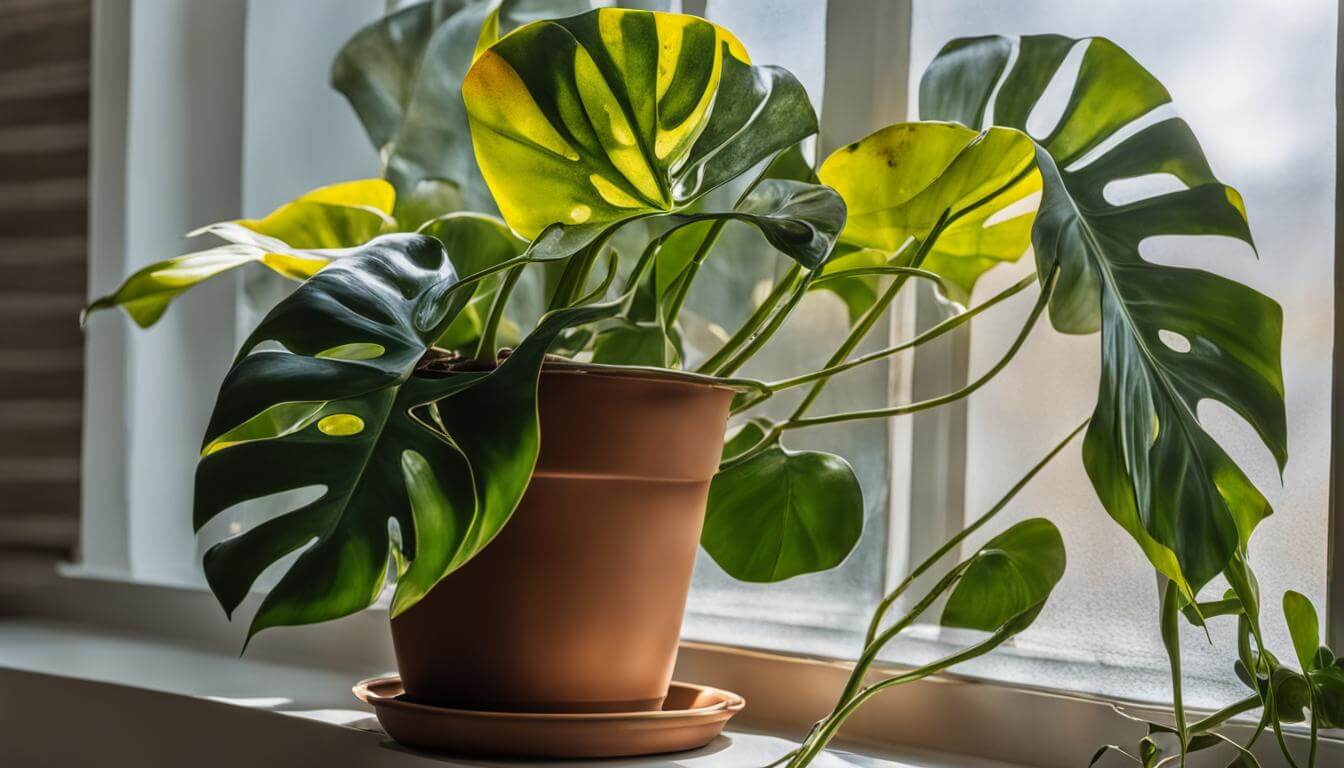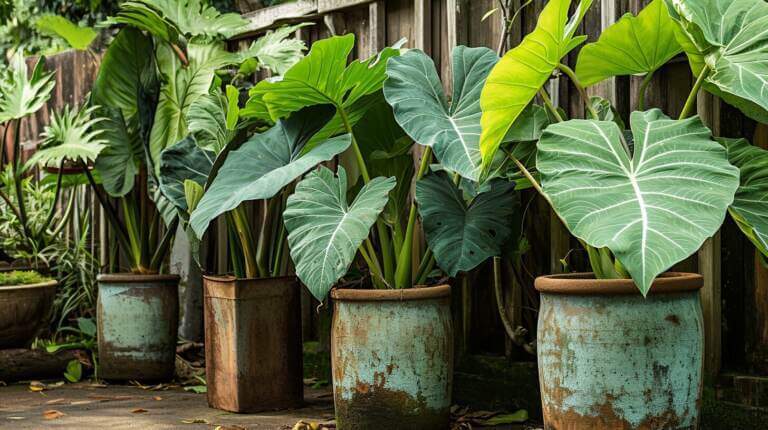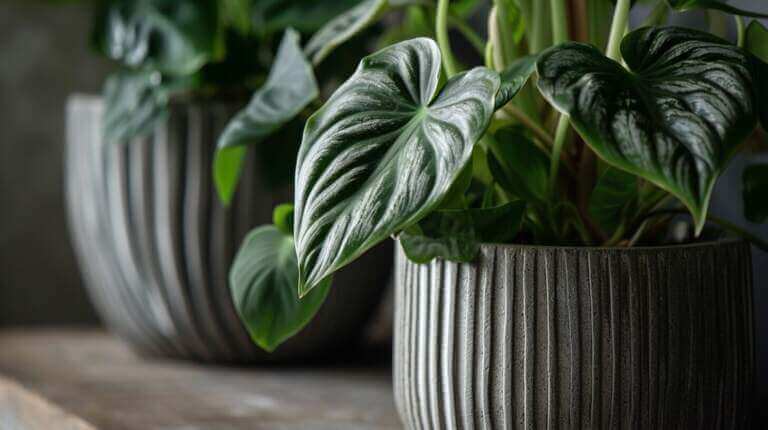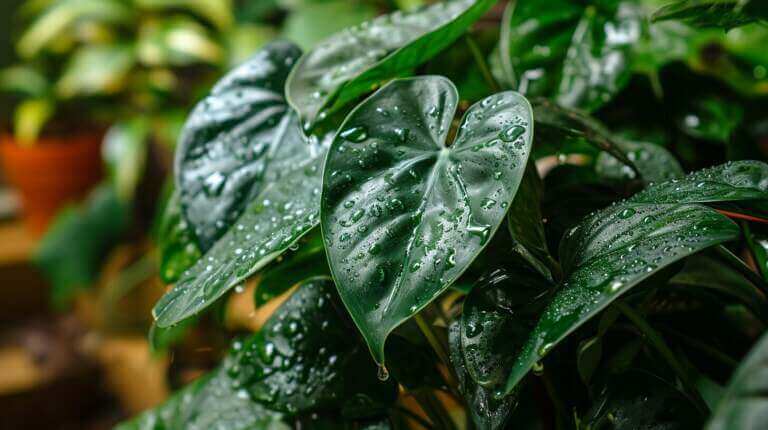There comes a time when every proud plant parent witnesses the sadness of a droopy monstera, also known as the Swiss cheese plant. Monstera plants, particularly Monstera deliciosa, can exhibit drooping for various reasons, giving their owners pause as they search for the best ways to restore their beloved green friends to peak health. Luckily, I’ve compiled some essential tips to consider in order to identify, address, and mitigate the causes of monstera drooping and promote a thriving monstera plant.
Key Takeaways
- Monstera plants can droop due to inadequate water intake, temperature stress, and over-fertilization.
- Regularly watering your monstera when the top 2 inches of soil are dry can prevent droopiness.
- Increasing humidity around your monstera is essential for its health, as it thrives in tropical environments.
- Protect your monstera from cold drafts and sudden temperature drops to prevent drooping.
- Ensure your monstera receives bright indirect light to maintain its distinctive leaf perforation.
- Monitor fertilizer use to avoid over-fertilization, which may cause droopiness or more severe symptoms.
- Repotting your monstera into a larger container or providing a climbing aid can enhance its overall health.
Unearthing the Root Causes of Monstera Plant Drooping
The droopiness of Monstera leaves can stem from several factors, including inadequate water intake, temperature stress, and over-fertilization. To help your Monstera thrive, it’s essential to identify the cause of the drooping and address the underlying issue. In this section, we’ll explore the most common reasons for drooping Monstera leaves and provide tips on how to tackle each problem.
- Monstera soil too dry: If the topsoil layer is consistently dry, your Monstera may be under-watered, causing the leaves to droop. To remedy this, water your plant when the top 2 inches of soil feel dry to the touch. Be sure to keep a consistent watering schedule and monitor the soil moisture regularly.
- Over-fertilization: Overfeeding your Monstera can lead to an accumulation of salt and nutrients in the soil, causing the leaves to droop. To avoid over-fertilization, follow the recommended guidelines on your fertilizer package and ensure proper soil drainage. If you suspect your plant has been over-fertilized, flushing the soil with water can help remove excess nutrients.
- Temperature stress: Monsteras prefer warmer temperatures, and exposure to cold drafts or sudden temperature drops can cause the leaves to droop. Ensure the temperature in your home remains consistent, ideally above 50 degrees Fahrenheit, and avoid placing your Monstera near cold drafts or air vents.
Per horticulturist insights, the primary triggers for drooping include the plant enduring colder temperatures than preferred, soil dryness, specifically in Monstera adansonii, and the adverse effects of over-fertilization.
In addition to addressing these common causes, it’s also vital to monitor your plant’s overall health. Healthy Monsteras have lush, vibrant leaves and strong root systems. If you notice any changes in your plant’s appearance or growth, take action to rectify the problem promptly. By providing your Monstera with proper care and cultivating the right environment, you can help prevent drooping leaves and maintain a thriving, beautiful plant.
Quenching Thirst: Proper Watering Techniques for Monstera
One of the most common causes of a drooping Monstera plant is underwatering. In this section, we’ll cover how to identify underwatering in your Monstera plant, provide a step-by-step guide on the soak-watering method to rehydrate your plant, and discuss how to adjust your watering habits to prevent overwatering.
Identifying Underwatering: Signs & Symptoms
Monstera underwatering is often signaled by leaves that lose their sheen, displaying a faded or grayish-green hue, particularly in Monstera adansonii. As the underwatering progresses, you may notice wilting leaves, followed by browning leaf tips and edges. If the soil feels dry to the touch, you can conclude that your Monstera is underwatered.
Soak-Watering Method: A Step-by-Step Guide
- Place your Monstera plant in a basin of water, larger than the pot it’s contained in.
- Ensure that the water level is high enough to saturate the monstera soil’s top 2-3 inches, achieving a thorough soak for your Monstera.
- Let the Monstera soak and absorb water for at least 45 minutes, allowing the water to enter through the plant’s drainage hole.
- Drain the water basin and allow the Monstera to drain completely to avoid any issues related to overwatering.
Consistent soak-watering Monstera sessions will ensure that your plant gets sufficient hydration, helping it look its best and prevent drooping.
Adjusting Watering Habits to Prevent Overwatering
It is crucial to strike a balance when watering your Monstera to avoid overwatering. Keep a consistent watering schedule that reflects the dryness of the top soil layer and maintain moist conditions without an excessive build-up of water in the pot.
Avoid overwatering Monstera plants by observing the signs, such as yellow but moist leaves. To maintain the right Monstera soil consistency, ensure that water doesn’t pool in the drip tray, as this could be an indicator of excessive moisture.
In conclusion, a proper Monstera watering schedule that combines consistent monitoring and effective techniques like soak-watering will keep your plant well-hydrated and free from droopiness.
Cultivating the Right Environment: Light, Soil, and Space for Monstera
As a tropical plant, a Monstera thrives when provided an environment reminiscent of its natural habitat. This includes consistent humidity, bright indirect light, and a moisture-retentive yet well-draining soil setup. Drooping may indicate the need for such conditions, with insufficient monstera light requirements leading to yellowing leaves and a lack of the distinctive leaf perforation that Swiss cheese plants are known for.
Monsteras require an environment that doesn’t get too cold and stays humid, which can be created by using humidity-increasing methods such as misting, pebble trays, or humidifiers. A proper monstera soil environment and suitable indoor garden conditions will not only prevent drooping leaves but also promote general plant health. Moreover, Monsteras need room to grow – indications of being rootbound include visible roots emerging from the pot. Solutions include repotting into a larger container or providing a climbing aid like a moss pole.
Root rot, while less common, is a serious issue requiring the removal of decayed roots and repotting the Monstera in a slightly larger pot. Maintaining the health of the Monstera’s leaves is crucial, which can be achieved through regular wiping with a damp cloth to remove dust and allow for optimal photosynthesis. Paying attention to these aspects of your Monstera’s environment will encourage a healthy, happy, and well-supported plant that flaunts its vibrant, droop-free leaves.
FAQ
What causes droopy Monstera leaves?
Several factors can cause droopy Monstera leaves, including inadequate water intake, temperature stress, and over-fertilization. Monstera plants may droop in response to colder temperatures, dry soil, or excessive fertilization, as well as other environmental factors such as humidity and light.
How can I identify and address underwatering in my Monstera plant?
Signs of underwatering in Monsteras include leaves losing their sheen, wilting, and browning of leaf tips and edges. To address underwatering, employ the soak-watering method to ensure proper soil saturation and adjust your watering schedule to maintain moist soil without causing excess water and overwatering issues.
What factors should I consider when creating the right environment for my Monstera plant?
Monsteras thrive in environments that mimic their tropical native habitat. This includes consistent humidity, bright indirect light, and a moisture-retentive, well-draining soil setup. You should also provide ample room for your Monstera to grow and repot the plant when it becomes rootbound.
How can I prevent over-fertilization in my Monstera plant?
To prevent over-fertilization, follow the instructions provided on your chosen fertilizer and avoid exceeding the recommended frequency and amount. If you suspect over-fertilization is causing issues, flush the soil with water to remove excess nutrients and adjust your fertilizing habits accordingly.
How do I take care of my Monstera’s leaves to maintain their health and appearance?
Keeping Monstera leaves clean is essential for their overall health and appearance. Gently wipe the leaves with a damp cloth to remove dust and promote optimal photosynthesis. Additionally, provide the required humidity, light, and well-drained soil to maintain a healthy environment for your Monstera plant.







